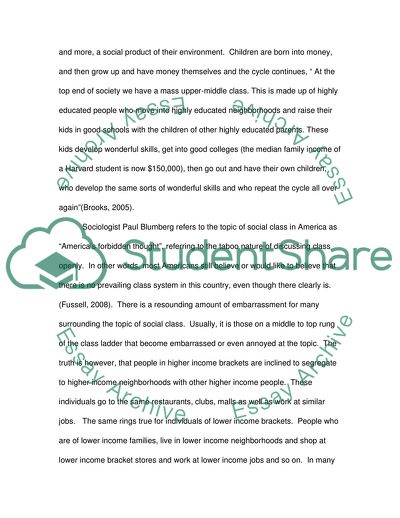Cite this document
(The Stickiness of Social Class Systems in America Essay Example | Topics and Well Written Essays - 1250 words, n.d.)
The Stickiness of Social Class Systems in America Essay Example | Topics and Well Written Essays - 1250 words. https://studentshare.org/sociology/1713712-what-are-the-sources-of-enduring-class-inequalities-in-american-society-ie-why-are-social-classes-sticky-how-do-classes-reproduce-themselves-over-generati
The Stickiness of Social Class Systems in America Essay Example | Topics and Well Written Essays - 1250 words. https://studentshare.org/sociology/1713712-what-are-the-sources-of-enduring-class-inequalities-in-american-society-ie-why-are-social-classes-sticky-how-do-classes-reproduce-themselves-over-generati
(The Stickiness of Social Class Systems in America Essay Example | Topics and Well Written Essays - 1250 Words)
The Stickiness of Social Class Systems in America Essay Example | Topics and Well Written Essays - 1250 Words. https://studentshare.org/sociology/1713712-what-are-the-sources-of-enduring-class-inequalities-in-american-society-ie-why-are-social-classes-sticky-how-do-classes-reproduce-themselves-over-generati.
The Stickiness of Social Class Systems in America Essay Example | Topics and Well Written Essays - 1250 Words. https://studentshare.org/sociology/1713712-what-are-the-sources-of-enduring-class-inequalities-in-american-society-ie-why-are-social-classes-sticky-how-do-classes-reproduce-themselves-over-generati.
“The Stickiness of Social Class Systems in America Essay Example | Topics and Well Written Essays - 1250 Words”. https://studentshare.org/sociology/1713712-what-are-the-sources-of-enduring-class-inequalities-in-american-society-ie-why-are-social-classes-sticky-how-do-classes-reproduce-themselves-over-generati.


